After their trip we returned to our second home in Illinois and I asked Graciela how she knew about the titmouse.
She said she wanted to write a blog about her experience, as she did after her first visit to the Grand Canyon. Maybe she will get around to it despite all her other activities, but I pinned her down and interviewed her after she told me about this book she received as a gift from her parents.
Q. How did you know about the titmouse?
A. Because of a very helpful book called the Backyard Guide to Birds of North America.
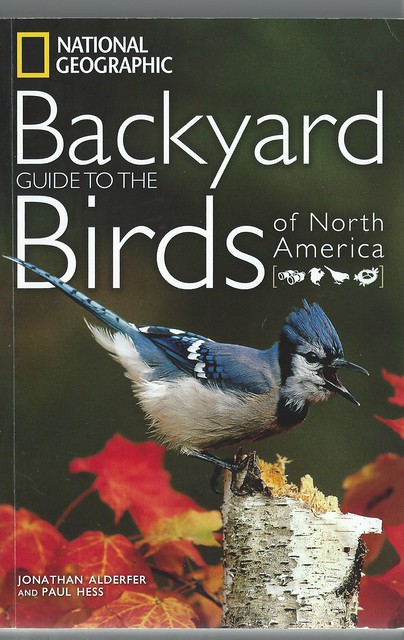
Q. Isn't a backyard bird book about common birds like robins, starlings and pigeons?
A. No this isn't a simple book. It actually tells about many birds that you might never have heard of at all, like the Yellow-billed Cuckoo and even some types of hawks and vultures.
Q. I'm surprised! How many birds species does it describe?
A. There are 150 species of birds, all divided into different categories on 253 pages.
Q. Is it a field guide?
A. No, it is not a field guide because a field guide would list only certain things but this book includes basically everything. It does have hints about how to tell some birds apart, but that is not all.
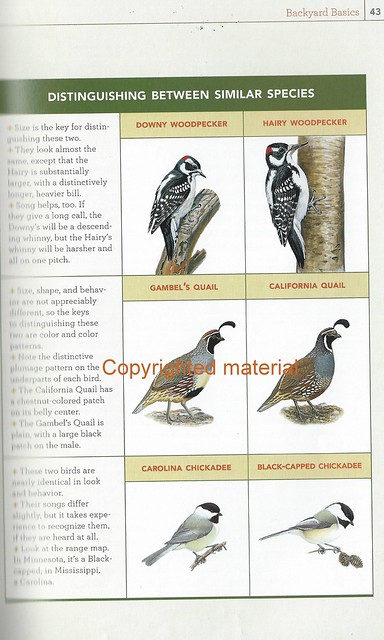
Q. So it is not just about identifying birds?
A. It not only identifies birds by telling what they look like and similar species, but also their call, range maps, what they eat and where you could find a nest. These things are not usually in a field guide. For example, the Northern Flicker takes up two whole pages. One page has the red-shafted flicker and the other has the yellow-shafted flicker, along with paintings and photographs of each, the males and females, showing them flying, even though they are both classified as the Northern Flicker.
Q. What else might distinguish it from a field guide?
A. There are special sections like those about bird feeders, creating a bird-friendly yard, types of bird houses, and when and where you can find birds in each season. In between the bird species you can find some pages that tell about interesting things like irruptions, caching food and finding it, how long do birds live, and how they change colors and so forth. There is a gallery of warblers.
Q. When you were in the Grand Canyon you wrote to me about seeing a titmouse. Did you see it in your book?
A. There are titmice in my book but it did not mention that certain species of titmous that I saw. It had the shape of a titmouse and looked like the Oak Titmouse. The book said that the Juniper Titmouse is a look-alike to the Oak Titmouse and you told me this is the titmouse species most likely found in the area of the Grand Canyon. The book shows where the Oak Titmouse lives, way out in California.
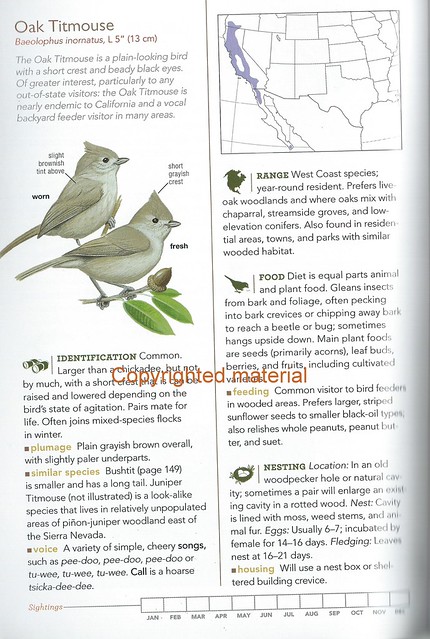
Q. You mentioned an irruption. I guess you know what that means?
A. It is an event that happens occasionally around the fall or winter when all of a sudden a large number of birds from farther up north come to your feeders. Normally they are birds in the finch category.
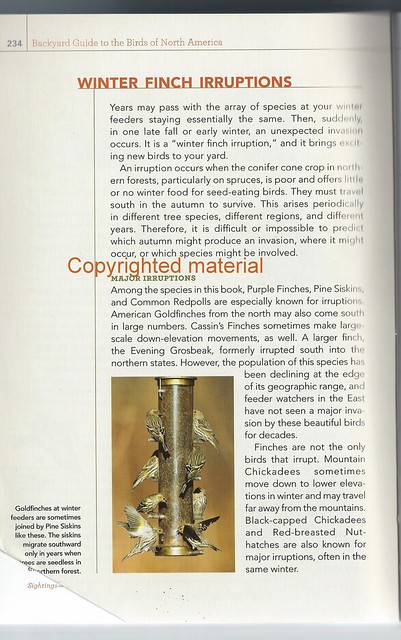
Q. That is pretty informative. It does not sound like purely a children's book. What ages is it directed to?
A. This book is good for anyone whether kid or adult. A child maybe down to even a seven year old child.
Thanks, Graci. With your permission I will post this as a book review in my blog, but I must give you all the credit, and thanks for asking me to use photos from my archives to illustrate it.
Here are some photos of birds in Graciela's back yard.
Males, Northern Cardinal and House Finch:
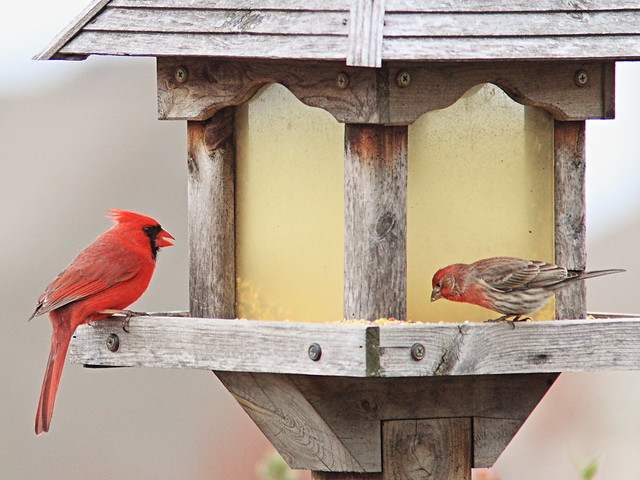
Common Grackle:

Black-capped Chickadee:
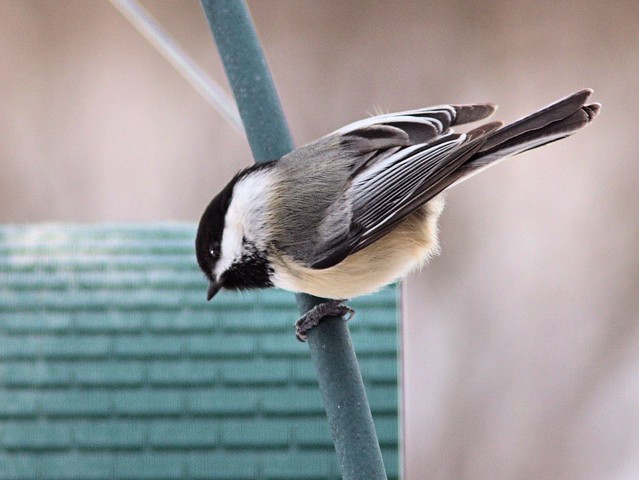
Female House Sparrow:

Chipping Sparrow:

Dark-eyed Junco:
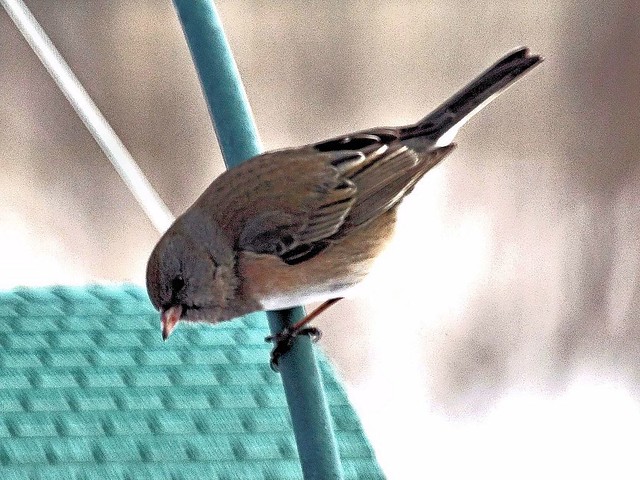
American Tree Sparrow:
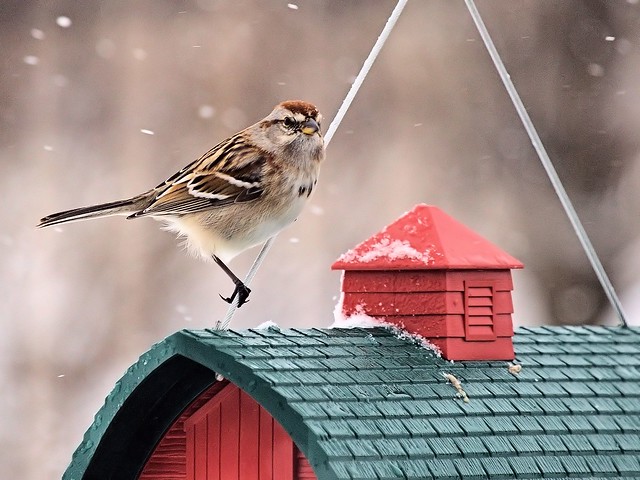
Male American Robin:
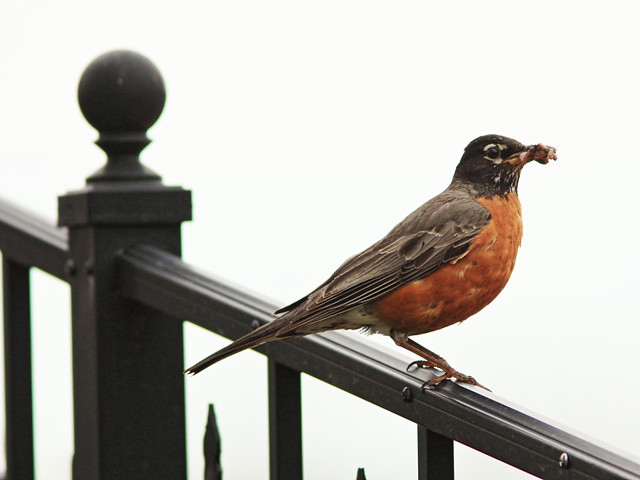
National Geographic Backyard Guide to the Birds of North America (National Geographic Backyard Guides)
Paperback – March 15, 2011
by Jonathan Alderfer (Author), Paul Hess (Author)
AMAZON.COM -- $13.65
- - - - - - -- - - - - - - - - - - -
Linking to Wild Bird Wednesday by Stewart and
Bird and Wildlife Book and App Reviews by Ken
________________________________________________
Now that sounds like a very ehlpful book for both children and adults alike. You haveexplainedd it very well, thanks to your grand daughter. Love all the bird photographs.
ReplyDeleteThis is a terrific post! I might have to order one of those books. I have the David Sibley book.
ReplyDeleteWhat an enjoyable post. Your granddaughter sounds like a very intelligent and well-spoken young lady!
ReplyDeleteNice variety of birds. And thanks for the book review!
ReplyDeleteWonderful photos and thank you for the tips on the nice guide book to birds!
ReplyDeleteHave a Happy Week!
Peace :)
I love that Chipping Sparrow and also your granddaughters enthusiasm for birds. Brilliant!
ReplyDeleteHow impressive! Your grand-daughter is an intelligent young lady. She gave information about the book in wonderful detail! Loved your photos as well! Great post!
ReplyDeleteGreat bird shots and a nice looking book. One pf the joys of having to travel a bit with work is seeking out regional bird guides - almost as addictive as new camera gear!
ReplyDeletecheers - Stewart M - Melbourne
You have a serious birder on your hands...she will love them the rest of her life.
ReplyDelete